
Brian demonstrates an exercise designed to stretch the hip into internal rotation, decreasing the risk of excessive lumbar rotation and/or knee collapse. See 'Related Resources' below for past Functionally Fits and other exercises and training tips. |
Note: Identifying limitedhip internal rotation is important when assessing clients. I use a relativelysimple screening tool I refer to as the windshield wiper observation. Toexecute this, have your clients lie prone with the knees bent to 90 degrees andthe feet together initially. Then ask them to let the feet fall away from eachother (keeping the knees flexed to 90 degrees the whole time).
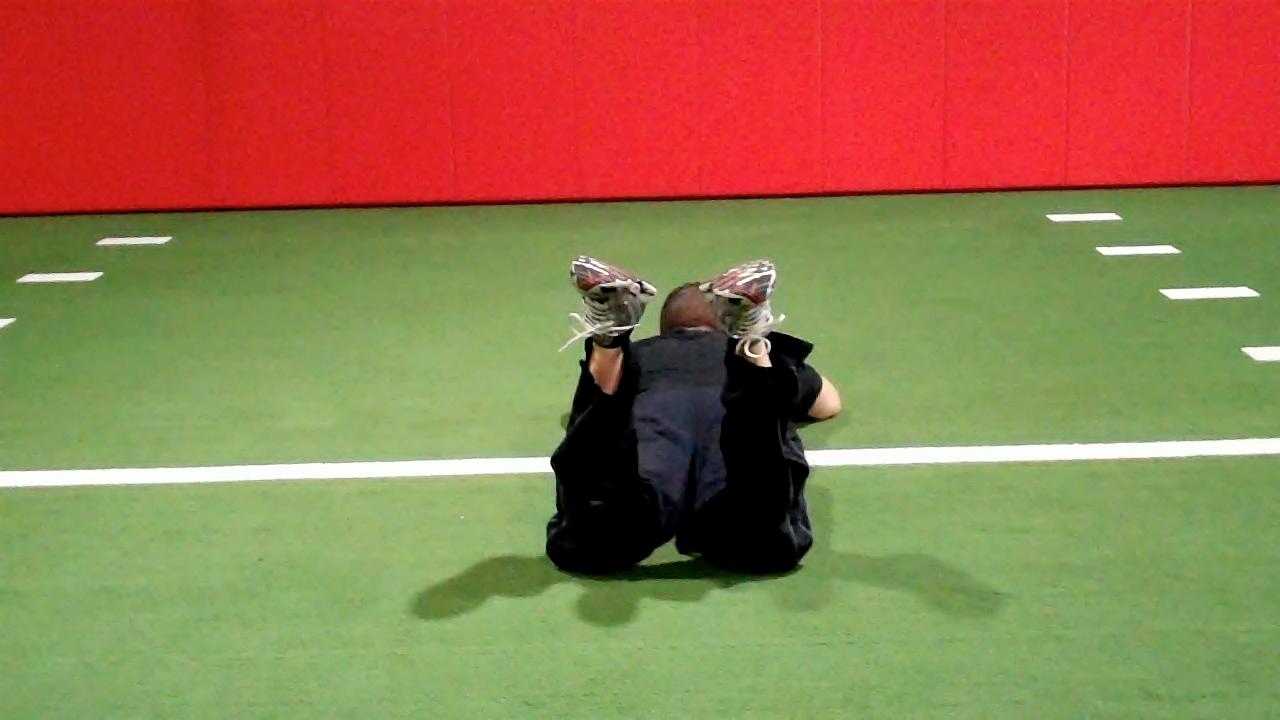 | 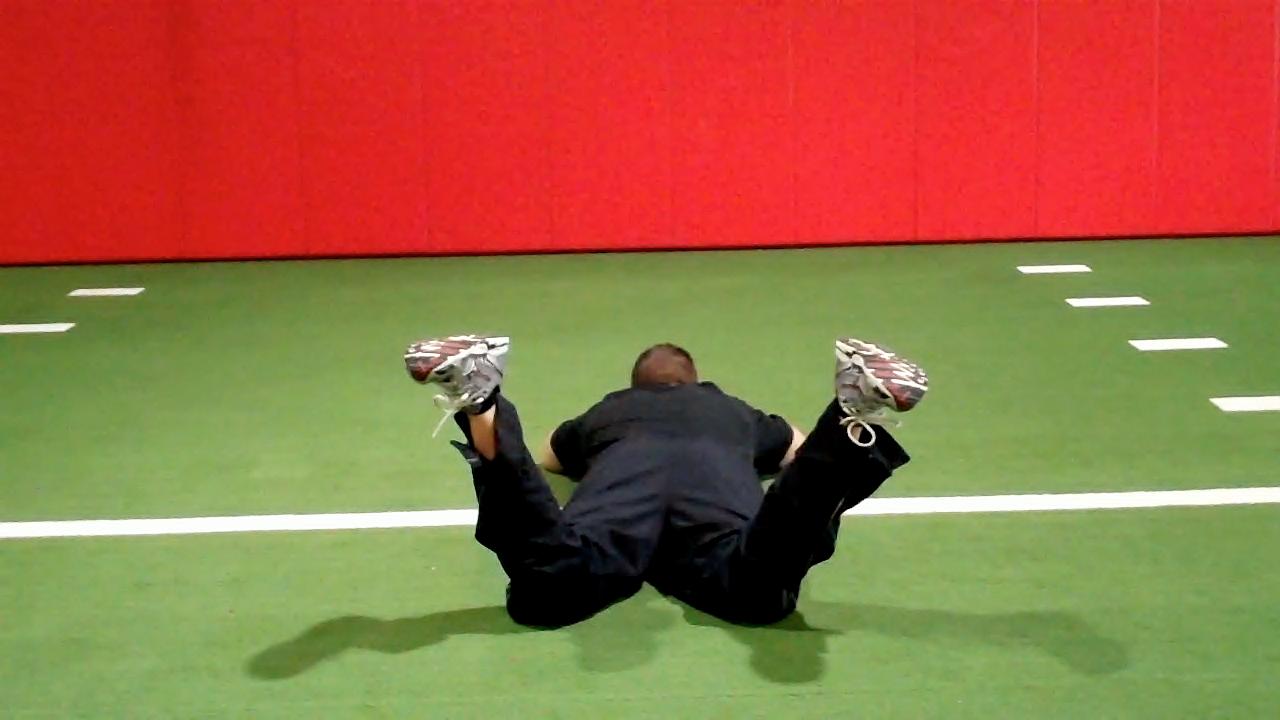 |
Observe any marked differences in range of motion bystanding or kneeling at least three to five feet directly behind them. Often,you will see a side-to-side difference. While it would be great to stretch inthis position, most people cannot comfortably reach up behind and do so withoutpotentially hyperextending the lumbar spine or feeling awkward in the movement.So, I prefer to use a supine stretch.
Execution: 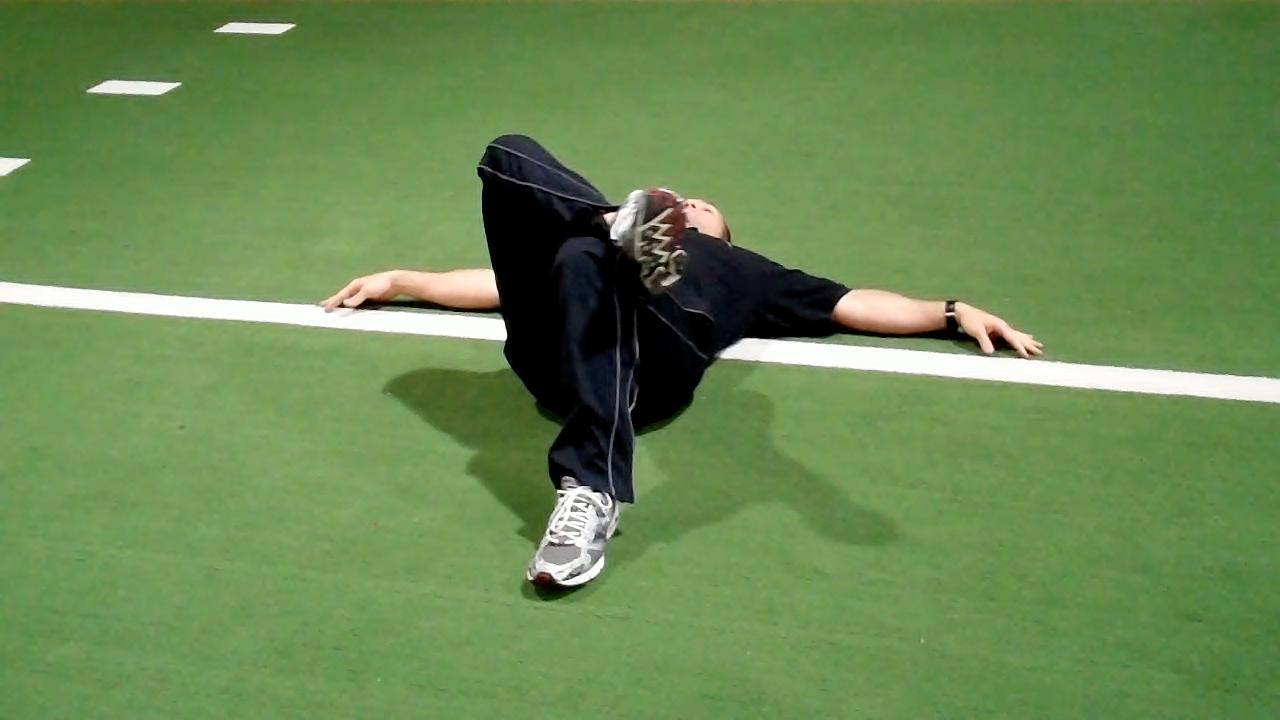 |
Begin lying flat on your back with the knees bent at 90 degrees and the feet flat on the floor. Position the arms so that they are perpendicular to the body. |
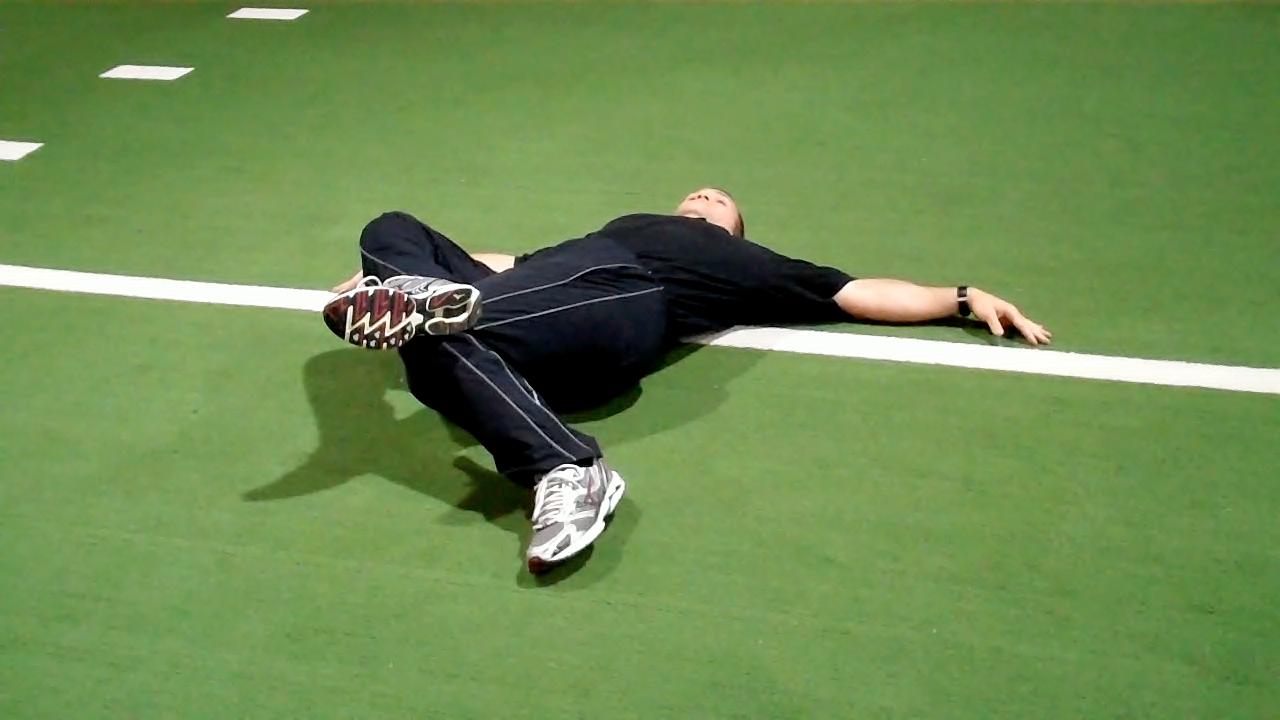 | 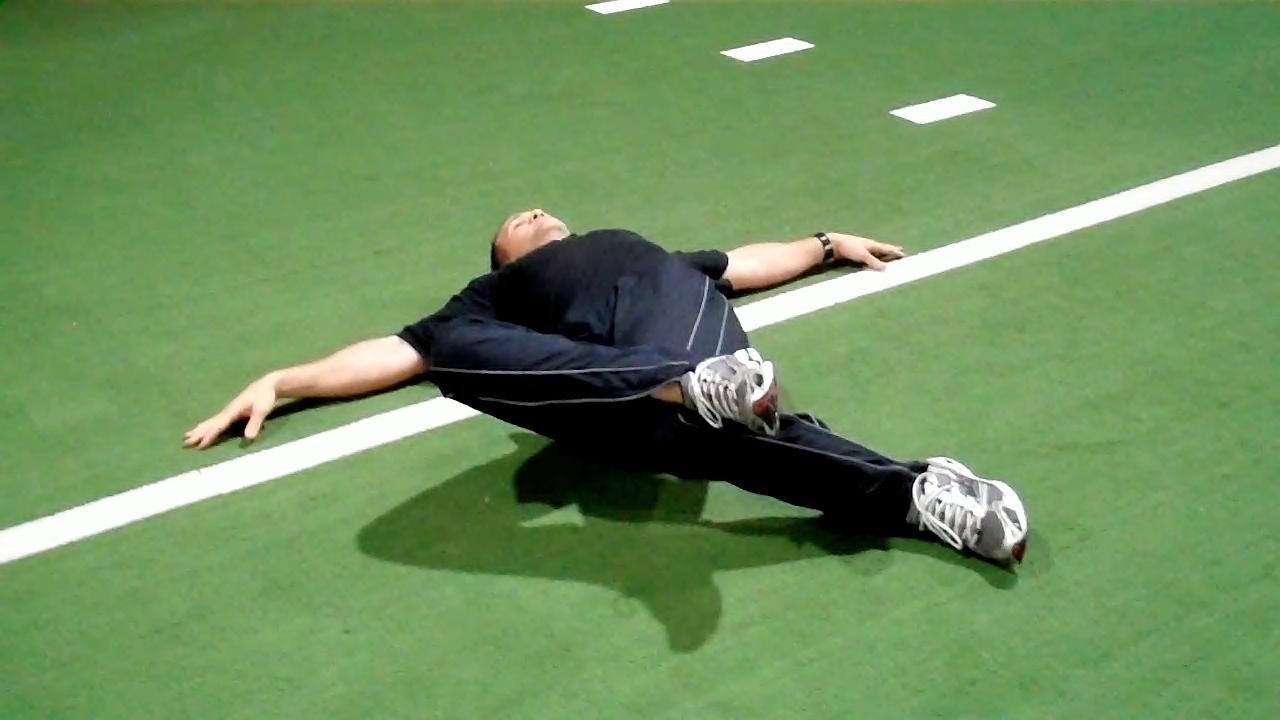 |
Next, cross your right leg over the left so that theoutside of the right foot is above the left knee. Slowly allow the left hip tointernally rotate (moving toward the floor) and apply gradual overpressure withthe outside of the right foot until a comfortable stretch is felt in the left hip.
Be sure to keep the shoulder blades pressed down against thefloor throughout to minimize pelvic and lumbar motion -- this will ensureoptimal stretching of the hip. It is normal for the foot on the floor to notremain flat during the stretch. Hold the stretch for 30 seconds and repeattwice on each side.
Application:
Hip flexor external rotator tightness is common in clientstoday given the enormous time spent sitting. The body prefers to rest in anexternally rotated position in sitting and standing. Limited hip internalrotation often leads to excessive lumbar rotation and/or knee collapse in theclosed chain as the body seeks to turn for functional activities.
A classic example is the golf swing. Consider the back swingfor a right handed golfer. As the player takes the club away, the left hip ismoving into external rotation, while the right hip is moving into internalrotation. If the right hip is limited, the golfer will typically seek a greatercoil (think increased torsion here) in the lumbar spine to achieve a full turn.
This type of compensation by the body leads to repetitivemicro trauma and overuse injuries over time. Stretching the hip into internalrotation is very similar to stretching the posterior joint capsule in theshoulder, and should be a part of your training programs if there is alimitation observed.
Important note:
If clients have severe limitation in motion and a pinching pain with thisstretch, do not force through it as they may be suffering from femoroacetabularimpingement (FAI) and may have a potential labral problem in the hip. If youobserve this, refer them to their local orthopedist.
Brian Schiff, PT, CSCS, is a licensed physical therapist,respected author and fitness professional. Currently, he serves as thesupervisor at the Athletic Performance Center in Raleigh, NC. Brian presentsnationally at several professional conferences and seminars on injuryprevention, rehab and sport-specific training. For more cutting edge traininginformation, subscribe to his monthly Training & Sports Medicine Update at www.BrianSchiff.com.
















